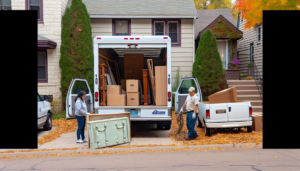The Complete Guide to Handling a Car Accident

Accidents often occur when least expected. At the time, it can be challenging to think clearly and rationally. Knowing what to do in the event of an accident before one occurs is the best way to prepare in the event tragedy strikes.
Safety First
Make sure that you are safe after an accident occurs, quickly assess the situation. If there are no serious injuries and your vehicle can still be driven, safely move it out of the way of further potential harm. If the vehicle can’t be moved or are severely injured, turn on the hazard lights to warn other drivers approaching the accident scene.
Exit the Vehicle
If your vehicle is in a safe place or your hazard lights are on, be sure the vehicle is in park and will not move, then turn off the engine. Before exiting the vehicle, be sure it is safe to do so. If you have flares or other road safety signals, consider using them.
Assess Injuries
Check on individuals involved in the accident, including those in the other vehicle or other individuals involved. If any injuries have occurred, call for emergency medical assistance.
Call the Police
Even if it is a minor accident, reporting it to the police can be extremely valuable when dealing with car insurance companies. Answer questions as best as you can, but don’t admit fault or blame others. Let the police objectively assess the situation and come to their own conclusions.
In some states, if no injuries have occurred, you will be directed to file an accident report through the Department of Motor Vehicles.
Obtain Information
Gathering information can be critical, and recording as much detail as possible could prove helpful later. The information you should be sure to obtain is:
- Driver and passenger names
- License plate numbers
- Make, model, and year of vehicles
- Insurance information of all drivers
- Contact information of passengers and witnesses
- Location of the accident
- Time of day, weather and road conditions
- Name and badge number of responding police officers
Document the Site
Documenting the accident site can be useful if there is a lawsuit or investigation by the insurance companies. If possible, take pictures of the accident scene, affected vehicles, road conditions, and any other items, road signs, or construction materials that could have played a factor in the accident.
File a Claim
Many individuals opt to file an insurance claim before leaving the accident site. This can be done by calling the insurance company or filing online with a smartphone.
The state in which the accident occurred will determine whose insurance will be liable for the accident. Some states are considered at-fault states, meaning the individual found at fault for the accident is responsible for all damages. In states that are no-fault states, it doesn’t matter whose fault the accident was- each driver’s insurance will pay for their damages.
Document Expenses
If you suffered injuries or paid for repairs due to the accident, keep all receipts and medical records for compensation. Call a lawyer after an accident if you feel your rights have not been met, or you feel you may be eligible to receive more compensation than an insurance company offers you.





